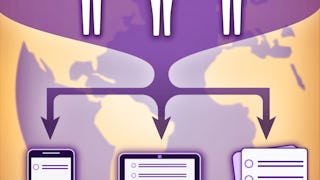In this course, you will learn about the role and importance of civil registration and vital statistics (CRVS) systems that are used to track birth, death, and life events. Experts from around the world will explain what CRVS systems are, how they are used, the legal bases for registering vital events, and challenges experienced with CRVS systems. You will learn about how CRVS data can be used to inform population-level decision-making, including around specific methods such as medical certification of cause of death (MCCOD) and verbal autopsy, and the application of a gender and equity lens to data systems to ensure they are responsive to the needs of populations. Our overarching goals for the course are to support the collection of country-level death and birth data, to improve the use of data to inform policy priorities, track trends, and plan interventions, and enhance monitoring of major risk factors for early death, especially from noncommunicable diseases.



Civil Registration & Vital Statistics in Population Health



Instructors: Michelle Colder Carras
Included with 
What you'll learn
Define the importance of CRVS and the challenges associated with collecting data on birth, death, and cause of death.
Explain the core functions of civil registration and vital statistics, as well as the formats in which they are implemented.
Consider how to strengthen CRVS and address data quality issues, using cause of death interventions as an example.
Understand the importance of using equity and gender-transformative approaches to CRVS to ensure that everyone is counted and no one is left behind.
Details to know

Add to your LinkedIn profile
12 assignments
See how employees at top companies are mastering in-demand skills


Earn a career certificate
Add this credential to your LinkedIn profile, resume, or CV
Share it on social media and in your performance review

There are 2 modules in this course
What's included
10 videos2 readings6 assignments2 discussion prompts
What's included
6 videos3 readings6 assignments1 discussion prompt
Instructors

Offered by
Recommended if you're interested in Public Health

Johns Hopkins University

Johns Hopkins University

Universiteit Leiden

Imperial College London
Why people choose Coursera for their career





Open new doors with Coursera Plus
Unlimited access to 10,000+ world-class courses, hands-on projects, and job-ready certificate programs - all included in your subscription
Advance your career with an online degree
Earn a degree from world-class universities - 100% online
Join over 3,400 global companies that choose Coursera for Business
Upskill your employees to excel in the digital economy
Frequently asked questions
Access to lectures and assignments depends on your type of enrollment. If you take a course in audit mode, you will be able to see most course materials for free. To access graded assignments and to earn a Certificate, you will need to purchase the Certificate experience, during or after your audit. If you don't see the audit option:
The course may not offer an audit option. You can try a Free Trial instead, or apply for Financial Aid.
The course may offer 'Full Course, No Certificate' instead. This option lets you see all course materials, submit required assessments, and get a final grade. This also means that you will not be able to purchase a Certificate experience.
When you purchase a Certificate you get access to all course materials, including graded assignments. Upon completing the course, your electronic Certificate will be added to your Accomplishments page - from there, you can print your Certificate or add it to your LinkedIn profile. If you only want to read and view the course content, you can audit the course for free.
You will be eligible for a full refund until two weeks after your payment date, or (for courses that have just launched) until two weeks after the first session of the course begins, whichever is later. You cannot receive a refund once you’ve earned a Course Certificate, even if you complete the course within the two-week refund period. See our full refund policy.
More questions
Financial aid available,

